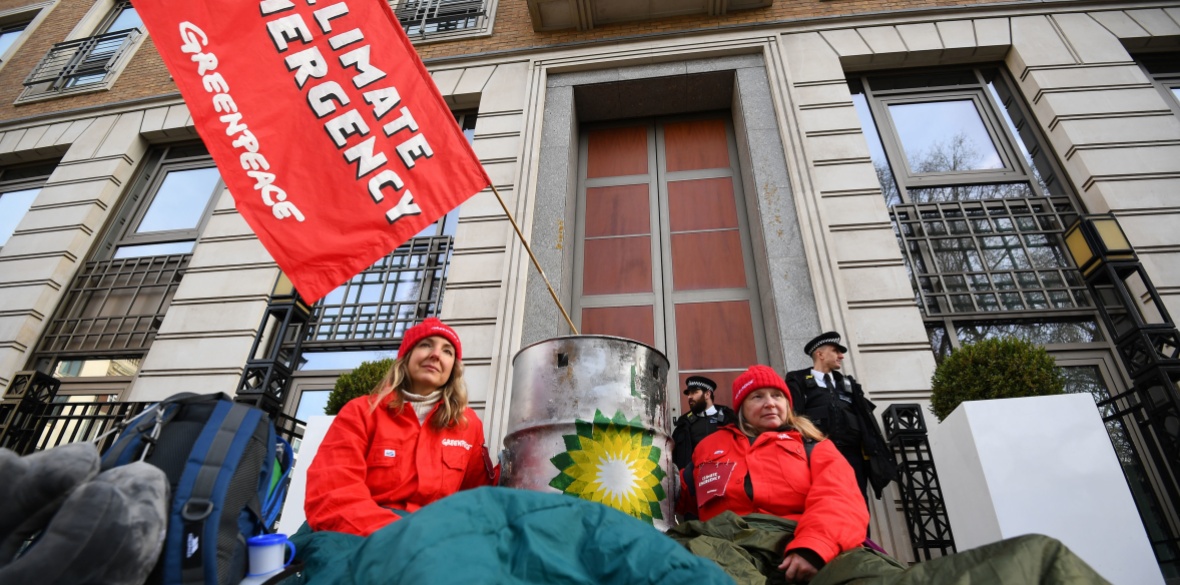Trump delivers right-wing tirade against socialism in State of the Union address
5 February 2020
US President Donald Trump delivered a right-wing tirade in his State of the Union address Tuesday evening, ranting against socialism and denouncing his political opponents.
Trump feels emboldened by the failure of the Democrats’ impeachment efforts, which are expected to conclude with a vote in the Senate for acquittal today. He utilized the occasion to redouble his attacks on socialism, escalate his attacks on immigrants, and present himself as the force responsible for a supposed revival of the American economy.
The annual State of the Union address has long been an exercise in delusion and fraud, but Trump’s remarks yesterday raised this ritualistic exercise to new heights. Amidst an extreme crisis of the entire political system, unending wars that threaten to develop into a global conflict, unprecedented levels of social inequality, and growing mass popular opposition, Trump attempted to paint a picture of hope, success, and optimism—all flowing from the beneficence of the president.
“In just three short years,” Trump declared, “we have shattered the mentality of American decline and we have rejected the downsizing of America’s destiny. We have totally rejected the downsizing,” he said. “We are moving forward at a pace that was unimaginable just a short time ago and we are never going back.”
The real content of the “recovery” Trump boasted of was his declaration that “United States stock markets have soared 70 percent.”
Trump, following on Obama, has overseen a further massive redistribution of wealth from the working class to the rich, with trillions funnelled into the stock markets through corporate tax cuts and “quantitative easing” from the Federal Reserve.
The supposed rosy state of the economy, however, was belied by Trump’s attacks on socialism—that is mass opposition to social inequality and exploitation—which he presented as the gravest threat to the United States and the world.
“Socialism destroys nations,” Trump declared. He added, “One hundred thirty-two lawmakers in this room have endorsed legislation to impose a socialist takeover of our healthcare system… To those watching at home tonight, I want you to know: We will never let socialism destroy American healthcare!”
He further denounced the “radical left” for wanting to “provide unlimited free healthcare” for immigrants. House Speaker Nancy Pelosi, who stood behind Trump, was quick to disassociate the Democrats from this position by declaring “not true.”
The speech was full of demagogic appeals to Trump’s right-wing base, including attacks on immigrants and “sanctuary cities”, praise for border officials who have overseen concentration camps on the US-Mexico border, and denunciations of the constitutional right to an abortion.
At one point, Trump took the unprecedented action of awarding a presidential Medal of Freedom to far-right talk-show host and demagogue Rush Limbaugh.
If Trump has successes to boast of, it is getting his far-right agenda through the Congress and the courts. He bragged about passing the USMCA trade deal with Mexico, cracking down on immigrants and massively expanding the US military.
All these policies have, in fact, passed on a bipartisan basis. One of the most significant events of the speech came when Trump hailed right-wing Venezuelan politician Juan Guaidó, who the US has recognized as the self-proclaimed “interim president” of the country.
Democrats and Republicans stood in applause for Guaidó, who was present at the speech, demonstrating the bipartisan support for US imperialist operations in Latin America and internationally.
The Democrats also cheered when Trump boasted about the murder of Iranian General Qassim Suleimani, a war crime that brought the United States to the brink of a full-scale war against Iran.
When an observer in the gallery, the father of a child killed in the Parkland shooting, booed Trump’s boasting of his support for gun rights, Pelosi glared at him and motioned for him to be ejected.
Since Trump came to office three years ago, the Democrats have worked to channel mass opposition to the reactionary and fascistic administration behind their own conflicts with Trump, centered on issues of foreign policy. This has culminated in the impeachment, which is focused on Trump’s decision to delay military aid to Ukraine in its proxy war with Russia.
The fecklessness of the Democrats’ opposition to Trump was on display in the theatrics of House Speaker Pelosi’s interactions with Trump during the speech. The media has made much of the fact that Pelosi offered to shake Trump’s hand at the beginning of the event, which he snubbed, and her ripping up of Trump’s speech afterwards.
More significant was Pelosi’s statement after the event. Accompanying a photo of the proffered handshake, Pelosi wrote: “Democrats will never stop extending the hand of friendship to get the job done… We will work to find common ground where we can.” In other words, we will work with Trump on key aspects of ruling-class policy but will oppose him on what we consider critical to the interests of American imperialism.
As for the 10-minute official rebuttal from Michigan Governor Gretchen Whitmer, it was focused mainly on a tribute to Michigan residents for personally trying to fix the state’s notoriously poor roads with “a shovel and a bucket of dirt.”
It is one thing, however, for Trump to run circles around the Democratic Party. It is quite another to face down real popular opposition. While the Democratic Party’s impeachment drive is in shambles, social opposition is growing.

